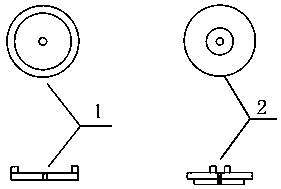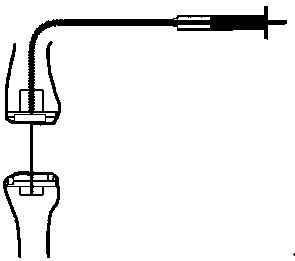Esophageal extension and anastomat capable of being accurately controlled in vitro
A stapler and esophageal technology, applied in the medical field, can solve problems such as narrow indications, poor efficacy, and inability to apply to patients with missing esophagus
- Summary
- Abstract
- Description
- Claims
- Application Information
AI Technical Summary
Problems solved by technology
Method used
Image
Examples
specific Embodiment approach
[0010] figure 1 , the device is divided into an internal part (anastomotic part), a conducting part, and an extracorporeal part (control part). The body part consists of a part of 1, 2 and 3. The conduction part is composed of 3,4. The in vitro part consists of 5,6,7. 1 is a disc-like structure with a small hole in the center and a raised edge, which is the part where the force acts. 2 is a device for anastomosis with the esophagus paired with 1, which has a central bulge on the other side, and is the action point of 4, with a central small hole and a local ring-shaped bulge to prevent slippage. 3 is to pull a practical thin medical stainless steel guide wire through 1 and then weld an anti-slip device. 4 is a hose with a metal skeleton, which can transmit the force of the external part to the device 2. 5. It is an internal thread external sleeve 6. Externally threaded hollow screw matched with 5, with auxiliary force handle. 7 is a metal buckle device that prevents slipp...
PUM
 Login to View More
Login to View More Abstract
Description
Claims
Application Information
 Login to View More
Login to View More - R&D
- Intellectual Property
- Life Sciences
- Materials
- Tech Scout
- Unparalleled Data Quality
- Higher Quality Content
- 60% Fewer Hallucinations
Browse by: Latest US Patents, China's latest patents, Technical Efficacy Thesaurus, Application Domain, Technology Topic, Popular Technical Reports.
© 2025 PatSnap. All rights reserved.Legal|Privacy policy|Modern Slavery Act Transparency Statement|Sitemap|About US| Contact US: help@patsnap.com



